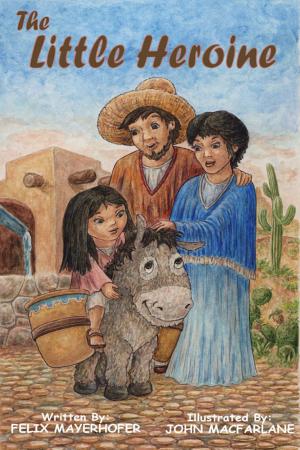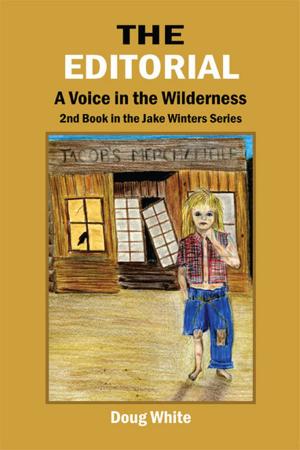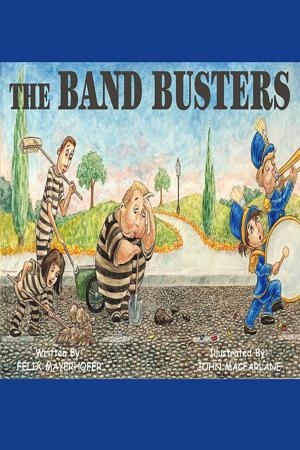My God & Saviour
Nonfiction, Religion & Spirituality, Christianity, General Christianity, Fiction & Literature, Religious| Author: | Kenneth John Marks | ISBN: | 9781604143508 |
| Publisher: | Fideli Publishing, Inc. | Publication: | April 2, 2011 |
| Imprint: | Smashwords Edition | Language: | English |
| Author: | Kenneth John Marks |
| ISBN: | 9781604143508 |
| Publisher: | Fideli Publishing, Inc. |
| Publication: | April 2, 2011 |
| Imprint: | Smashwords Edition |
| Language: | English |
My God & Saviour is a collection of short stories based on my understanding of God’s nature as a Person and on the principles of my Christian faith. Many of these stories came to me as I meditated on God’s word and on its application to my life.
Most of the stories are based on Biblical events, for example Gabriel coming to Mary to tell her that she will soon bear the Son of God. These stories came to me as I imagined myself watching these events unfold; as I imagined watching the characters interact with God, usually in His incarnation as Jesus—or with His angels or with His enemies—as the characters struggled to serve the Lord. On the other hand, some of these stories are what one might call parables. They are fictional and they contain a single point of instruction, generally about what it means to be a Christian and to faithfully serve the Lord our God.
To enhance a reader’s understanding of each story, it is introduced by one or more verses of Scripture, which are quoted to illustrate the story’s point or to provide the source of its inspiration. There is also a personal note from me describing my motivation for writing it.
For the reader unfamiliar with the way common people lived in ancient times, here are some historical notes. Their houses were normally small, single story dwellings made of sun-dried brick or broken undressed stone. They may have had two or three rooms with dirt floors; and the people’s animals probably lived with them. If the houses had two stories, it was not uncommon for the animals to live on the ground floor and the family to live above them.
Furniture, if there was any at all, was poorly made. For example, beds might have been as simple as mats laid on the ground or rude wood-framed cots. Unless otherwise informed by the narrative, you may infer that any houses mentioned herein are of this humble type.
People’s clothing generally consisted of one-piece garments that slipped over the head, along with a cloak for warmth, both made of coarsely woven wool fiber. (The rich might have worn similar clothing made of finely dyed linen cloth.) It is thought that the common peoplesometimes slept in their robes and cloaks. They generally wore sandals made of leather or went barefoot.
All Biblical quotations are taken from the New International Version (NIV) of the Bible. The NIV does not capitalize the pronouns “he” and “him” when referring to the Lord; therefore, when I quote this scripture, I quote it exactly as it is punctuated and capitalized. However, in the narrative, I do capitalize these pronouns.
Finally, though I wrote these stories for the entertainment of the reader, it was also my hope that he or she would find in them some spiritual instruction. My hope is that they will make each reader who knows our Lord Jesus Christ think about his/her faith; about what it means to be a Christian. My fervent hope is that the messages in these stories will inspire all readers to try to attain to a better knowledge and understanding his/her God and His ways.
My God & Saviour is a collection of short stories based on my understanding of God’s nature as a Person and on the principles of my Christian faith. Many of these stories came to me as I meditated on God’s word and on its application to my life.
Most of the stories are based on Biblical events, for example Gabriel coming to Mary to tell her that she will soon bear the Son of God. These stories came to me as I imagined myself watching these events unfold; as I imagined watching the characters interact with God, usually in His incarnation as Jesus—or with His angels or with His enemies—as the characters struggled to serve the Lord. On the other hand, some of these stories are what one might call parables. They are fictional and they contain a single point of instruction, generally about what it means to be a Christian and to faithfully serve the Lord our God.
To enhance a reader’s understanding of each story, it is introduced by one or more verses of Scripture, which are quoted to illustrate the story’s point or to provide the source of its inspiration. There is also a personal note from me describing my motivation for writing it.
For the reader unfamiliar with the way common people lived in ancient times, here are some historical notes. Their houses were normally small, single story dwellings made of sun-dried brick or broken undressed stone. They may have had two or three rooms with dirt floors; and the people’s animals probably lived with them. If the houses had two stories, it was not uncommon for the animals to live on the ground floor and the family to live above them.
Furniture, if there was any at all, was poorly made. For example, beds might have been as simple as mats laid on the ground or rude wood-framed cots. Unless otherwise informed by the narrative, you may infer that any houses mentioned herein are of this humble type.
People’s clothing generally consisted of one-piece garments that slipped over the head, along with a cloak for warmth, both made of coarsely woven wool fiber. (The rich might have worn similar clothing made of finely dyed linen cloth.) It is thought that the common peoplesometimes slept in their robes and cloaks. They generally wore sandals made of leather or went barefoot.
All Biblical quotations are taken from the New International Version (NIV) of the Bible. The NIV does not capitalize the pronouns “he” and “him” when referring to the Lord; therefore, when I quote this scripture, I quote it exactly as it is punctuated and capitalized. However, in the narrative, I do capitalize these pronouns.
Finally, though I wrote these stories for the entertainment of the reader, it was also my hope that he or she would find in them some spiritual instruction. My hope is that they will make each reader who knows our Lord Jesus Christ think about his/her faith; about what it means to be a Christian. My fervent hope is that the messages in these stories will inspire all readers to try to attain to a better knowledge and understanding his/her God and His ways.















